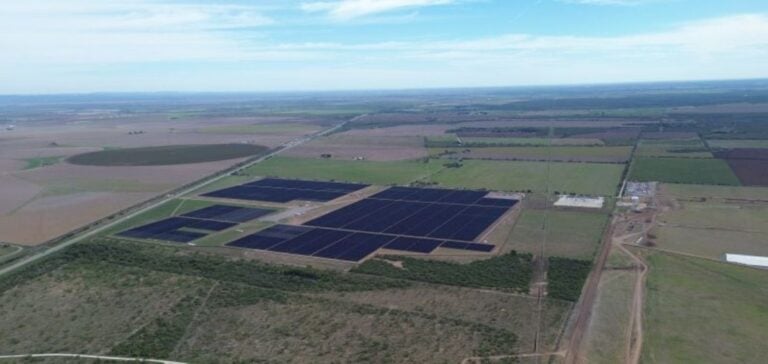Arava Power begins operation of SUNRAY, a 270-megawatt (MW) photovoltaic solar power plant located in Uvalde County, Texas.
Developed in partnership with Paz Group and financed by Menora Mivtachim, the project represents an investment of $330 million.
SUNRAY covers 1,200 acres, features over 500,000 solar panels and generates 515 gigawatt-hours of electricity per year, with half of this output sold under a 12-year contract and the other half on the Texas open market.
Arava Power and Paz Group acquired the SUNRAY project from OCI Energy in 2021 and completed financing in 2023.
Commercial operation will begin once construction is completed and the necessary permits have been obtained in 2024.
This project reflects Arava Power’s desire to increase its presence in renewable energies in the United States, by positioning itself in a competitive market.
Financial arrangements and players involved
Construction financing of $215 million is being provided by Nomura Securities International, Inc. while a senior loan of $70 million is being provided by a consortium including Ha’poalim Bank and BHI. Morgan Stanley is acting as a private equity partner, contributing a total of $150 million along with another investor. This diversified financing package demonstrates a distributed risk structure, attracting a variety of institutional players. The involvement of Nomura and Morgan Stanley reflects the solidity of the project in the eyes of the financiers, and their confidence in Arava Power’s ability to manage the challenges associated with developing large-scale solar projects. This confidence is also shared by Paz Group, which is looking to strengthen its position in the US renewable energy market.
Development challenges and growth prospects
Arava Power has to cope with complex market conditions, including fluctuating regulations and a tense financial environment.
Despite this, the company is achieving its objectives with SUNRAY, demonstrating its ability to adapt and manage risk.
This expansion comes at a time of intense competition in the US renewable energy sector, both from technology providers and project developers.
With SUNRAY, Arava Power plans to develop additional solar power plants in the United States, targeting a total capacity of 1.3 gigawatts (GW).
This growth strategy is based on a rigorous analysis of market opportunities, local partnerships and optimized asset management.
The portfolio of projects at various stages of development confirms the Group’s determination to gain a lasting foothold in the US market.
Partnership strategy and the U.S. market
SUNRAY’s success is based on coordination between Arava Power, Paz Group and financial players.
This partnership model reflects a cautious but calculated entry strategy into the US market, enabling Arava Power to capitalize on its international experience.
The SUNRAY project also demonstrates the flexibility of Israeli companies to collaborate with local and international entities to circumvent financial and regulatory obstacles.
As the U.S. energy transition offers opportunities for international developers, SUNRAY could serve as a model for future projects, particularly in terms of financial structuring and strategic alliances.
The lessons learned from SUNRAY’s development will be crucial for future projects, and for navigating a sector where market conditions can change rapidly.






















